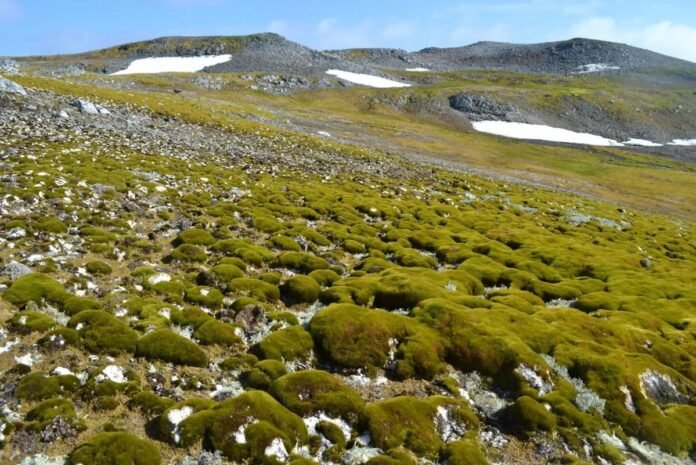The frigid Antarctica is changing as climate change drives vegetation growth. Recent satellite data shows that plant cover on the Antarctic Peninsula has risen more than tenfold since 1986, from less than one square kilometer to over 12 square kilometers by 2021. This rapid greening, mostly caused by mosses, has been exacerbated since 2016, when the sea ice extent surrounding the continent declined.
This vegetative spread has consequences beyond aesthetics as the earth warms faster than average. Introducing plant life to this arid landscape could allow invasive species to invade the vulnerable Antarctic ecology. Dr. Thomas Roland, the study’s co-leader, says this tiny fraction of plant life shows how human-caused climate change affects even remote places.
Melting snow is promoting green algae blooms, underscoring the region’s metamorphosis. Because Antarctica has little soil, mosses could help build soil and accumulate organic matter. Eco-tourists and researchers may bring non-native animals that imperil this nascent life.
Antarctica’s greening is a striking indicator of climate change and ecological tipping points that require global attention.



